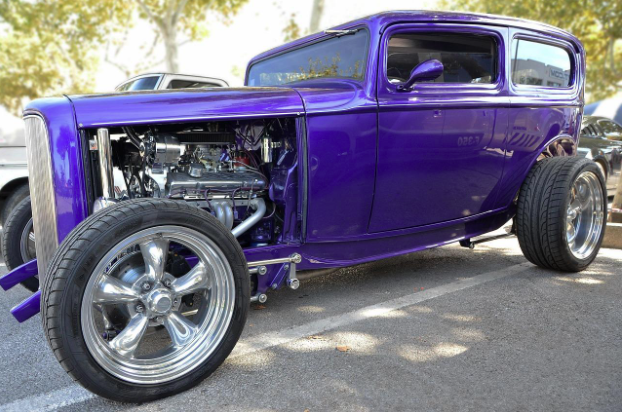In the sprawling history of American automotive culture, few vehicles have left a mark as deep and enduring as the 1932 Ford. Affectionately known as the "Deuce" (referencing the '2' in 1932), this unassuming production car transformed from practical transportation into the definitive canvas for hot rod expression. Nine decades later, the '32 Ford remains the holy grail of hot rodding—an automotive icon whose influence extends far beyond the sum of its parts.
The Perfect Storm: Why the '32 Changed Everything
The 1932 Ford rolled off assembly lines during the depths of the Great Depression. Henry Ford's revolutionary flathead V8 engine—the first affordable eight-cylinder powerplant—found its home in this model, delivering 65 horsepower to the masses. This combination of accessible V8 power and the car's distinctive styling created the perfect foundation for what would become hot rodding culture.
What made the Deuce special wasn't just its engine but its timing. As thousands of these cars entered the used market in the post-WWII era, young veterans with mechanical skills acquired during the war found them affordable and adaptable. The '32's relatively lightweight body and that groundbreaking flathead V8 presented the perfect opportunity for modification.
The Architecture of an Icon
Aesthetically, the '32 Ford struck gold with design elements that would become hot rodding signatures:
The distinctive grille shell—a graceful, slightly heart-shaped design with vertical elements—became perhaps the most recognizable front end in automotive history. Even heavily modified Deuces typically preserve this signature feature, often chromed to gleaming perfection.
The flowing fenders—designed for function but perfect for form—were frequently the first components removed by early hot rodders seeking weight reduction and a racier stance. This "highboy" look (a '32 body mounted on its original frame with fenders removed) remains among the most coveted hot rod styles.
The proportionally perfect body—with its slightly sloped roof on coupes and elegant lines on roadsters—provided the ideal canvas for sectioning, chopping, and channeling, the holy trinity of hot rod modification techniques.
Beyond Steel: The Deuce in American Culture
The '32 Ford transcended metal and mechanics to become a cultural touchstone. When the Beach Boys released "Little Deuce Coupe" in 1963, they weren't just singing about a car—they were celebrating an American institution. The song's success cemented the '32's place in popular culture beyond automotive circles.
Hollywood embraced the '32 as visual shorthand for rebellion and freedom. From "American Graffiti" to countless other films, the distinctive silhouette of a chopped and channeled Deuce became the vehicle of choice for characters bucking the system.
The Deuce's influence reached the art world too. Artists like Ed "Big Daddy" Roth and pinstriping legend Von Dutch used the '32 Ford as a recurring canvas, helping elevate hot rodding from backyard hobby to legitimate American art form.
Evolution, Not Revolution
As decades passed, the '32 Ford evolved from affordable project car to high-dollar investment. Original steel bodies command astronomical sums, while the aftermarket responded with reproduction bodies and components that allow builders to create "new" '32 Fords from the ground up.
Modern Deuce builds showcase technological evolution while honoring traditional aesthetics. Today's '32s often feature:
-
Computer-controlled fuel injection disguised as period-correct carburetors
-
Modern disc brakes hidden behind vintage-style drums
-
Contemporary overdrive transmissions for highway cruising
-
Air conditioning systems discreetly integrated into original dashboards
This balance of tradition and innovation keeps the '32 Ford relevant in an era of computerized vehicles. The Deuce represents something increasingly rare—a machine that rewards mechanical ingenuity and personal expression.
The Endless Canvas
What makes the '32 Ford truly remarkable is its versatility. From completely stock restorations to wildly customized show cars, the Deuce adapts to any vision:
Traditional Hot Rods: Flathead V8, black paint, steel wheels, and minimalist approach—the style that launched the movement.
Street Rods: Chrome-laden, candy-colored builds with modern drivetrains and comfort features designed for cross-country cruising.
Rat Rods: Deliberately unfinished aesthetic with surface rust, mismatched parts, and a focus on the mechanical essence over cosmetic perfection.
Race-Inspired Builds: Salt flat racers and dragstrip demons that prioritize speed over style (though they usually achieve both).
Each interpretation remains instantly recognizable as a '32 Ford, speaking to the fundamental rightness of the original design.
The Legacy Continues
The market has spoken clearly about the '32 Ford's place in automotive history. While production numbers were relatively modest (approximately 275,000 built in a single year), the Deuce commands prices that dwarf those of many rarer vehicles. A quality '32 Ford roadster can easily fetch six figures at auction—remarkable for what was originally an affordable family car.
For all the dollars changing hands, the true value of the '32 Ford lies in its cultural significance. It represents American ingenuity, the democratization of performance, and the transformative power of mechanical creativity. In a world of disposable consumer goods, the Deuce stands as testament to lasting design and personal expression.
Ninety years after its birth, the 1932 Ford isn't just remembered—it's actively celebrated, modified, raced, and reimagined by each new generation of hot rodders. That's not just survival; that's immortality on four wheels.

